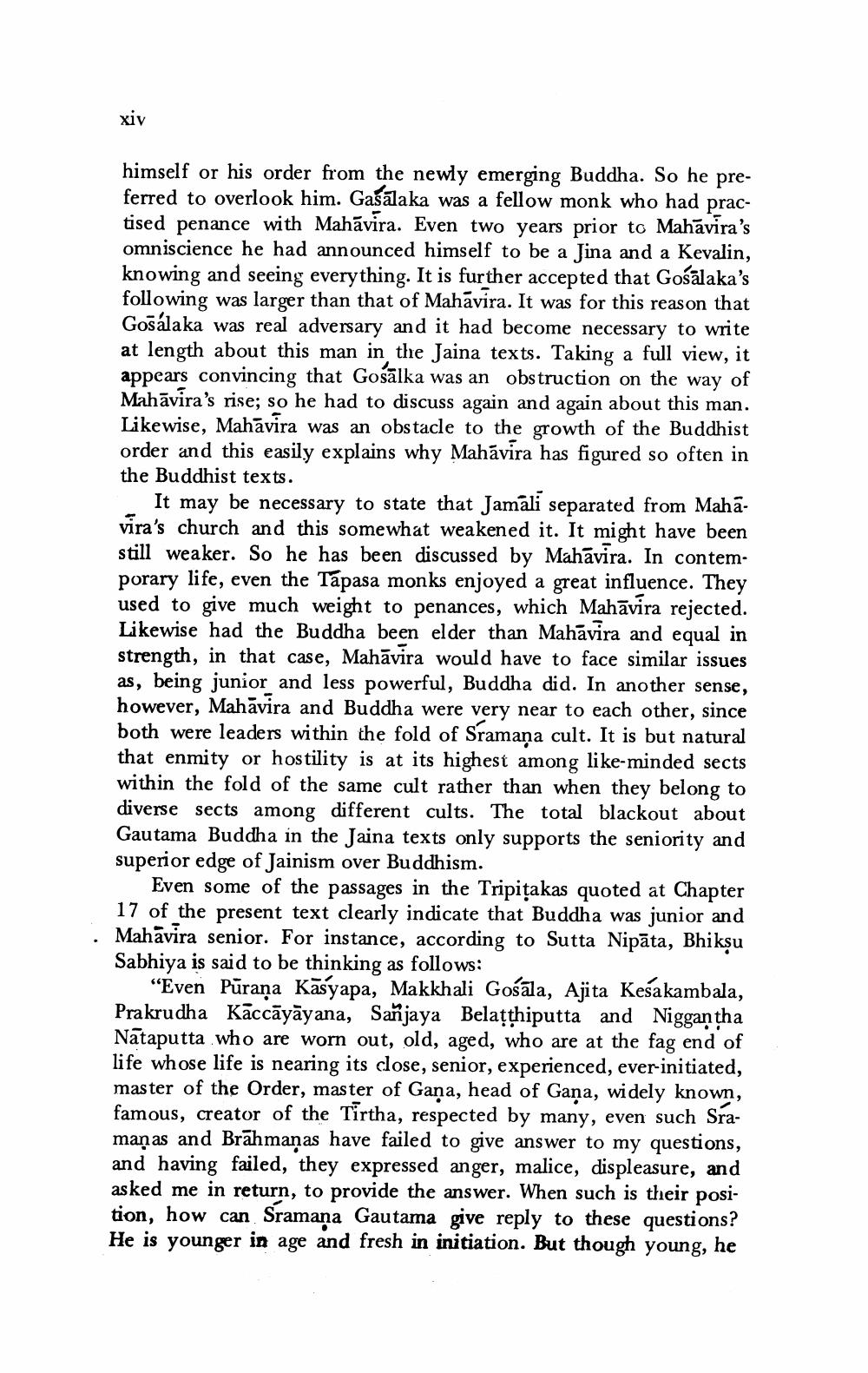________________
himself or his order from the newly emerging Buddha. So he preferred to overlook him. Gaśālaka was a fellow monk who had practised penance with Mahavira. Even two years prior to Mahavira's omniscience he had announced himself to be a Jina and a Kevalin, knowing and seeing everything. It is further accepted that Gosálaka's following was larger than that of Mahāvira. It was for this reason that Gosálaka was real adversary and it had become necessary to write at length about this man in the Jaina texts. Taking a full view, it appears convincing that Gosālka was an obstruction on the way of Mahāvira's rise; so he had to discuss again and again about this man. Likewise, Mahāvira was an obstacle to the growth of the Buddhist order and this easily explains why Mahavira has figured so often in the Buddhist texts.
It may be necessary to state that Jamali separated from Mahāvira's church and this somewhat weakened it. It might have been still weaker. So he has been discussed by Mahāvira. In contemporary life, even the Tapasa monks enjoyed a great influence. They used to give much weight to penances, which Mahāvira rejected. Likewise had the Buddha been elder than Mahavira and equal in strength, in that case, Mahāvira would have to face similar issues as, being junior and less powerful, Buddha did. In another sense, however, Mahavira and Buddha were very near to each other, since both were leaders within the fold of Sramana cult. It is but natural that enmity or hostility is at its highest among like-minded sects within the fold of the same cult rather than when they belong to diverse sects among different cults. The total blackout about Gautama Buddha in the Jaina texts only supports the seniority and superior edge of Jainism over Buddhism.
Even some of the passages in the Tripitakas quoted at Chapter 17 of the present text clearly indicate that Buddha was junior and Mahavira senior. For instance, according to Sutta Nipāta, Bhiksu Sabhiya is said to be thinking as follows:
“Even Pūraņa Kasyapa, Makkhali Gośāla, Ajita Kesakambala, Prakrudha Kāccāyāyana, Sanjaya Belațțhiputta and Niggantha Nataputta who are worn out, old, aged, who are at the fag end of life whose life is nearing its close, senior, experienced, ever-initiated, master of the Order, master of Gaņa, head of Gaņa, widely known, famous, creator of the Tirtha, respected by many, even such Sramaņas and Brāhmanas have failed to give answer to my questions, and having failed, they expressed anger, malice, displeasure, and asked me in return, to provide the answer. When such is their position, how can Sramana Gautama give reply to these questions? He is younger in age and fresh in initiation. But though young, he




